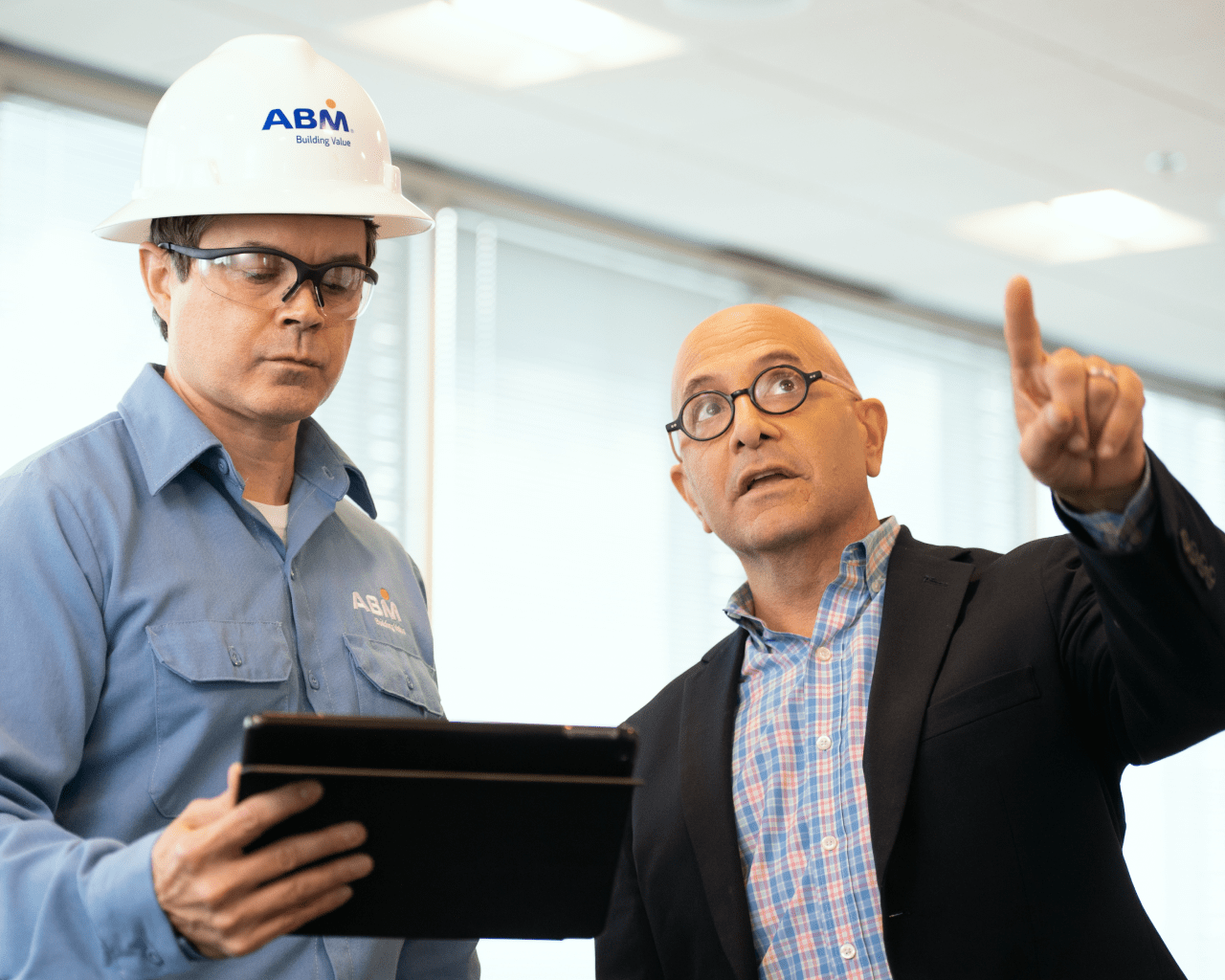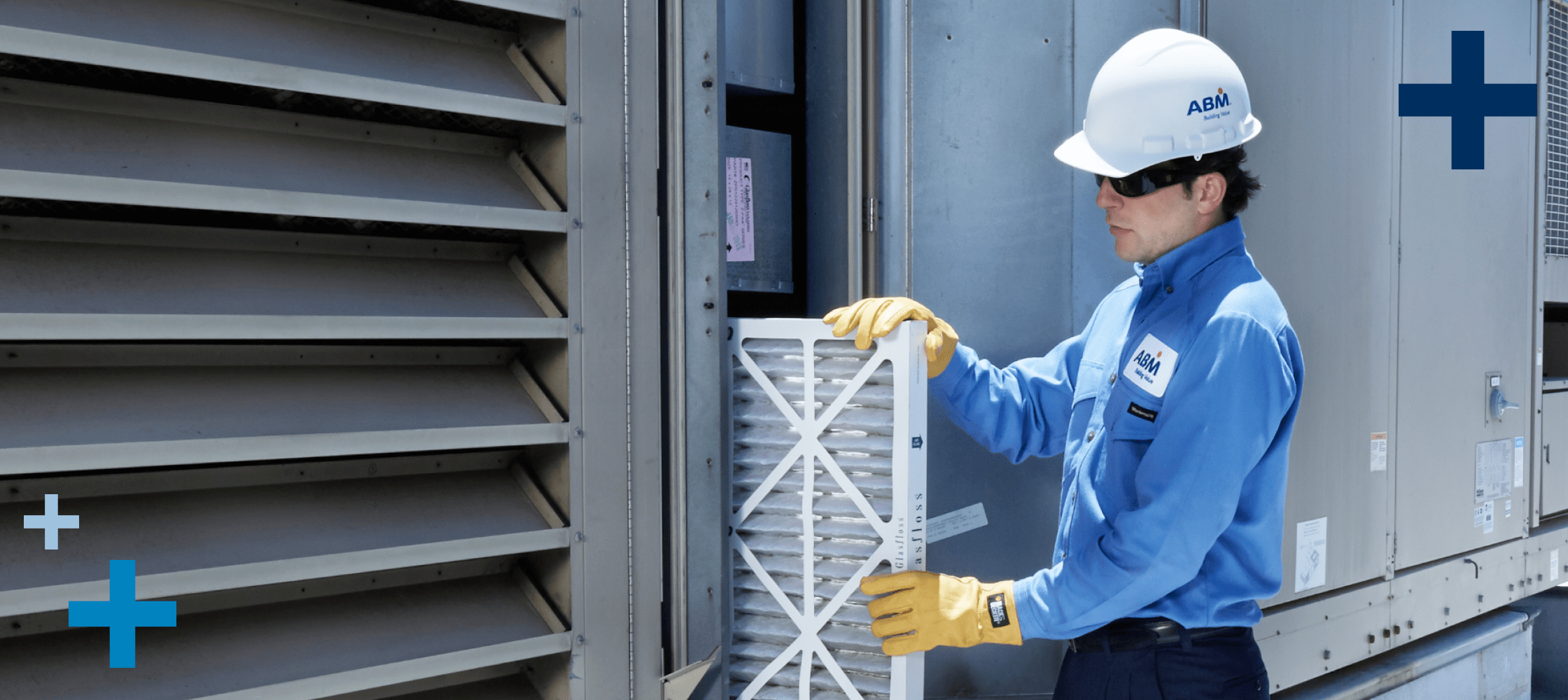Engineering the future of your CRE facility
5 critical ways CRE owners use engineering to meet tenant demands and get greater ROI
The commercial real estate owners of tomorrow face new tenant demands for agility, efficiency and sustainability. To meet them and remain competitive, property owners and managers are seeking precise facility engineering solutions, specialized data and the experts who know how to maximize all of it.
To meet your customers’ needs and demands—and to create CRE facilities fit for the future—always keep in mind these engineering factors that have major impacts on the success of your buildings.
Tracking and reducing CO2
As the public’s environmental awareness grows and new sustainability regulations emerge, carbon emissions data has become ever more important. Why? Because about 40% of the world’s carbon dioxide emissions comes from the built environment alone, and another 27% comes just from building operations, according to the International Energy Agency. And facility owners who measure their buildings’ carbon footprints can then identify their sources and find ways to reduce them.
Why this matters: The value of your asset will very soon include its carbon expenditure. Factor in region-specfic regulations and benchmarking requirements, and it’s easy to see why ESG and carbon reporting make an impact for building owners wanting to go above and beyond mere compliance. The crucial piece here is having a partner who can provide an assessment and discuss critical path-forward options, such as carbon-sequestering materials and carbon offsets.
Maximizing energy efficiency
Carbon mitigation efforts often dovetail with other engineering initiatives, such as those that improve a facility’s energy efficiency. On average, ABM customers see a 23% reduction in overall energy costs, thanks to common standardization initiatives such as:
- Updating lighting and HVAC systems to get greater benefits at lower costs
- Implementing renewable energy systems to reduce utility bills
- Installing window treatments to aid in the cooling and heating of indoor spaces
- Planting gardens and incorporating biophilic design to enhance air quality, occupant satisfaction and help stabilize temperatures
Why this matters: Across all facility services, standardization helps create consistent, efficient performance and great returns on investment. Especially when applied across a large portfolio or region, standards make inefficiencies more evident and costs easier to control. This is why having a transparent, holistic, operational vision for your facility is so vital.

Having a facility engineering partner who knows where to look—and how to effect actual change—makes all the difference for the ROI throughout your CRE portfolio.
Managing talent and budgets
Labor needs to be a key component of that vision. Sourcing, vetting and securing quality talent is an often-overlooked CRE operational expense. But a proven facility services partner, such as ABM's talent acquisition team, knows how to carefully manage not only the building itself, but also the people working on and in it. With more than 300 recruiters nationwide, and over 33 focused specifically on building operations and maintenance staffing, they regularly gain greater insights from employee reviews and have a better understanding of market salary rates, especially when it comes to skilled labor. And these benefits only multiply when carried out across an entire portfolio, region and specific facility types.
Not getting this part of the business right can lead to expensive employee turnover. Replacing a mid-level employee tends to cost at least 150% of his or her annual salary. Replacing entry level workers is cheaper, at 30% to 50%, but losing a highly skilled, specialized worker could cost up to four times his or her annual salary.
Hand-in-hand with improved efficiency is the diligent management of your CAPEX and OPEX budgets. Facility engineering firms with proven scale can make money-saving bulk purchases for everything from maintenance materials to health insurance for staff members. They can then pass those savings onward to you as the property owner or manager.
Why this matters: To remain successful far into the future, your facility maintenance strategies and budgets must account for not only planned capital improvement projects and longer-term operational goals, but also for the people working onsite to implement them.
Raising the bar and hitting every KPI
All of these measures above lead to a more strategic partnership between facility engineering and the building management team. In short, it’s because CRE owners’ performance and profitability targets have risen. And to ensure that their KPIs are met, portfolio owners are turning to facility services providers who can give them the edge they need, as ABM did to win a 5-year contract extension with its longtime REIT client. Its competitive facility engineering bid included:
- Improvements to the trust’s existing energy-savings strategy
- Less expensive insurance and medical benefits
- A dedicated account manager to handle the entire portfolio
Why this matters: Engineering services are raising the bar for facility management—because that’s exactly what facility owners need in the current economic climate. As John Rey, ABM Senior Vice President, Engineering East, who oversaw the REIT project noted:
Future-proofing your offices
Within the next decade, more employees will want many changes to the buildings where they work. This includes having the convenience of electric vehicle charging infrastructure. And as the largest commercial installer of EV charging stations in the country, ABM engineers know how to handle the complexity of this facility enhancement.
Adding to this is the rising occupant need for assurances that the building’s systems are engineered to protect their health with indoor air quality (IAQ), surface disinfection and more. Asset owners who implement one or more of the systematic, healthy-building standards focused on occupant health and wellness—LEED, Fitwel, WELL, etc.—will have the best results in protecting their tenants.
Why this matters: There is no quick, easy, plug-and-play solution to meeting these future tenant demands. Formulating the plan, installing the infrastructure and maintaining the ongoing operation of facility-wide, future-proofing measures such as these requires specialized engineering knowledge so that they remain both successful and cost effective for decades to come.
CRE facility owners must plan now for these emerging tenant demands, as well as share their vision for the future with a strategic facility engineering partner who can help make them a reality. By working together, they can create more responsive services for tenants, while raising the performance, sustainability and efficiency of the managed office building across their entire portfolios.


